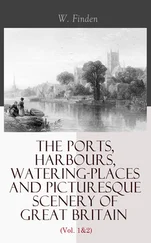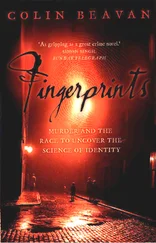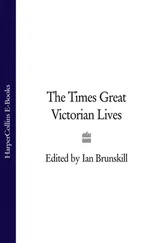The barrister concluded: 'A more unjust, a more improper, a more improbable case, having regard to the facts elicited in evidence, was never brought before any court of justice in any place, as far as I know, upon a charge of this serious nature, and seeking, as it does, to fix that charge upon a young lady in the position of life of Miss Constance Kent.'
Edlin's speech was much interrupted by applause from the audience. He ended shortly before 7 p.m. The magistrates conferred, and when the spectators were let back into the hall Ludlow announced that Constance was free to go, on condition that her father put up PS200, as a guarantee that she would appear in court again if required.
Constance left the Temperance Hall, escorted by William Dunn. The crowd outside fell back to let them pass.
When Constance reached Road Hill House, reported the Western Daily Press, 'her sisters and parents clasped her in the most passionate and exciting manner, embracing her most tenderly, and the sobbing and weeping and embraces were continued for a considerable time. At length, however, it subsided, and since then the young lady has presented a very subdued and contemplative demeanour.' She resumed her silence.
By any standards, Whicher's case had been weak. There were several practical reasons for his failure: he was called to the murder scene late, was thwarted by incompetent and defensive local police officers, was hurried into making an arrest, and was poorly represented in court - as he stressed in his report to Mayne, ' there was no professional man to conduct the case for the prosecution '. Samuel Kent, who in normal circumstances would have been expected to arrange the prosecution of the suspected murderer of his son, was hardly going to fund an attack on his daughter. Whicher felt sure that a professional lawyer could have better explained the theory of the missing nightdress, and persuaded Emma Moody to repeat what she had told him about Constance's dislike of Saville; these two things might have made all the difference. The magistrates did not need to decide on Constance's guilt, after all, but only whether there was enough evidence to justify sending her for trial.
What finally swung things against Whicher that day was Edlin's speech, his depiction of the detective as vulgar, greedy, rapacious in his destruction of a young woman's life. There was a sexual undertone, a suggestion that the policeman was a clumsy, lowerclass despoiler of a virginal innocent. The public were drawn to Edlin's analysis. Though the villagers of Road had been ready to believe that Samuel Kent's strange, unhappy adolescent children had killed their little brother, most Englishmen and women dismissed the idea as grotesque. It was almost inconceivable that a respectable girl could be possessed of enough fury and emotion to kill, and enough cool to cover it. The public preferred to believe in the detective's villainy, to attribute the moral pollution to him.
Jack Whicher's investigation had let light into the closed-up house, thrown the windows open to the air; but in doing so it had exposed the family to the prurient imaginings of the outside world. There was a necessary grubbiness to the police procedures: breasts were measured, nightclothes examined for marks of sweat and blood, indelicate questions asked of nice young ladies. In Bleak House, Dickens imagines the feelings of Sir Leicester Dedlock when his house is searched: 'the noble house, the pictures of his forefathers, strangers defacing them, officers of police coarsely handling his most precious heirlooms, thousands of fingers pointing at him, thousands of faces sneering at him'. While the crime fiction of the 1830s and 1840s had inhabited the rookeries of London, sensational crime in the 1850s had begun to invade the middle-class home, in fiction and in fact. 'Very strange things comes to our knowledge in families,' says Bucket. 'Aye, and even in gen-teel families, in high families, in great families . . . you have no idea . . . what games goes on.'
During Whicher's inquiries the Frome Times made 'an indignant protest against the conduct of some of the representatives of the press. We have been informed on reliable authority that one person penetrated into the house in the guise of a detective, - while another had the audacity to force himself into the presence of Mr Kent, and to ask of him the particulars of the murder of his son! In our opinion, this person's audacity and hard-heartedness can scarcely be equalled by the villain who perpetrated the dreadful crime.' This rhetoric, also deployed by Edlin, was made possible by the mid-Victorian sensitivity to 'exposure', to scandal and loss of privacy. The inquiries into a middle-class home, by the press and above all by the detectives, were felt as a series of assaults. Exposure could destroy, as murder made clear - when the lungs, airways, arteries, heart were suddenly opened to the air, they collapsed. Stapleton described Saville's death in these terms: the inhabitant of the 'house of life' had been 'rudely driven out by an unauthorised and violent intruder'.
The word 'detect' stemmed from the Latin 'de-tegere' or 'unroof', and the original figure of the detective was the lame devil Asmodeus, 'the prince of demons', who took the roofs off houses to spy on the lives inside. 'The Devil Asmodeus is the Devil of Observation', explained the French novelist Jules Janin. In his book about the Road Hill murder, Stapleton used the figure of Asmodeus, 'peering into the privacies' of the Kent family house, to embody the public fascination with the case.
'If every room of a house were seen into by a secret watcher,' wrote the Scottish detective McLevy in 1861, 'it would be a show-box even more wonderful than a travelling exhibition.' A plainclothes police officer was just such a secret watcher, a man licensed to pry. The detective hero might at any moment turn to reveal his grinning double, the voyeur.
'Angel and devil by turns, eh?' remarks Mr Bucket.
After Constance was bailed, Whicher told Ludlow that he saw no point in remaining in Wiltshire. 'I did not see any hope of getting further evidence by prolonging my stay,' he said in his report, 'as the only piece of further evidence would be to find the night dress which I feared was destroyed.' Ludlow agreed that he should go. He assured Whicher that he was convinced of Constance's guilt, and would send letters to that effect to Sir George Cornewall Lewis, the Home Secretary, and to Mayne. Henry Clark composed the letters at once: 'We are requested by the magistrates . . . to convey to you their thanks for the services of Mr Inspector Whicher and Mr Sgt Williamson. Although the evidence failed in establishing the guilt of the person arrested yet the magistrates are fully impressed with the idea that Miss Constance Kent is the guilty party and hope that evidence may yet be forthcoming to bring the perpetrator of the crime to justice. They are thoroughly satisfied with the exertions made by the officers above mentioned.'
Whicher and Williamson returned to London the next day. Whicher took with him the relics of his investigation: Constance's two remaining nightdresses, her list of linen, the bloodied piece of newspaper. In the new edition of All the Year Round, the hero of The Woman in White also finished his inquiries in the country. The episode ended: 'Half an hour later I was speeding back to London by the express train.'
That weekend there were severe thunderstorms around Road. Lightning lit the fields, the river Frome rose almost three feet, and hail thrashed down the corn.
During the proceedings in the Temperance Hall, Mrs Kent had gone into labour. 'The agitation and suspense of awaiting the result of the re-examination proved too great for her,' reported the Bath Chronicle, 'and the consequence was, premature labour set in.' It was rumoured that the baby was stillborn, but this proved false. Mrs Kent gave birth to a boy on Monday, 30 July, a month after her first son's murder, and named him Acland Saville Kent.
Читать дальше












